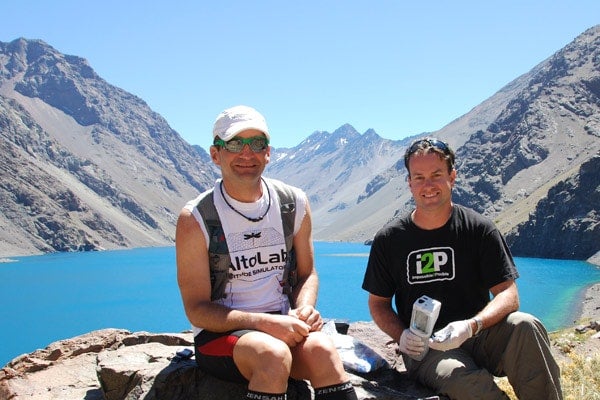
Taking the marathon to the classroom
Published: February 23, 2012
Few people will ever run a marathon in their lives, let alone twice a day, every day, for nearly a month. Using this experience as a teaching tool is uncommon, too. But ultra-marathoner Ray Zahab and University of Toronto professor Greg Wells have teamed up to bring Zahab’s experiences directly into the classroom.
Zahab, the visionary founder of Impossible2Possible, challenged himself to run two marathons daily -- in extreme conditions no less. Zahab’s journey involves a three-week, 1,700-kilometre trek across South America that will see him run the distance between the Pacific and Atlantic Oceans, crossing the Andes Mountains in the process. Wells, a physiologist, is using Zahab’s expeditions – of which there have now been three in the past year – to stretch the boundaries of his own research and teaching by tapping into the evolving world of experiential learning.
“I think we’re still figuring out how to do experiential learning,” said Wells, who will perform a variety of physiological tests on Zahab and fellow athletes during the Andes portion of the trek and film it all for U of T’s fourth-year environmental physiology students to see back home. The goal is to give students a real-time window into the physical demands that altitude places on extreme athletes, and the 7,000-metre summit – the largest peak in the Americas – is the ideal teaching environment. While the original goal was to stream Wells’ research live to the classroom, the overlapping Reading Week break required a change in plans.
“We are going to record videos relevant to the material we’re covering in class, upload them to the web, email the students the video links, and then send them real-time data from the athlete testing,” said Wells. “The students will be able to see what we’re doing as we do it.”
Instead of delivering a standard lecture when he returns to the classroom, Wells plans to facilitate a more collaborative discussion about what took place and what the students learned from what they witnessed. That discussion will include a question-and-answer period with Zahab, who will still be in South America completing the run, plus a video chat with Calgary-based Jim Elzinga, one of North America’s leading high-altitude climbers and the only Canadian to have led a successful expedition that established a new route from Tibet to the summit of Mount Everest.
Wells hopes that this approach to teaching will make the students more engaged in and excited about the material.
“I really want to try to rethink the way we teach,” he said. “Kids want information on their iPods, on their iPhones; they want to be able to access information anywhere, anytime. They learn in short bursts via many different technologies. They want to listen to it, watch it, read about it, tweet about it. They want to engage with it.”
But the most critical goal for Wells is merging research and teaching.
“We’ve established a new research program around ultra-endurance physiology and extreme human physiology,” he said. “The potential for collecting data around how the human body responds to extreme training and extreme environments is tremendous – not much data is available in that area right now.”
The biggest challenge is building a mobile laboratory that can collect research-quality data and broadcast it from anywhere in the world. “I am trying to fit my entire lab into my backpack!”
To learn more about Professor Wells and his work, follow him on Twitter or visit his personal or faculty website.



